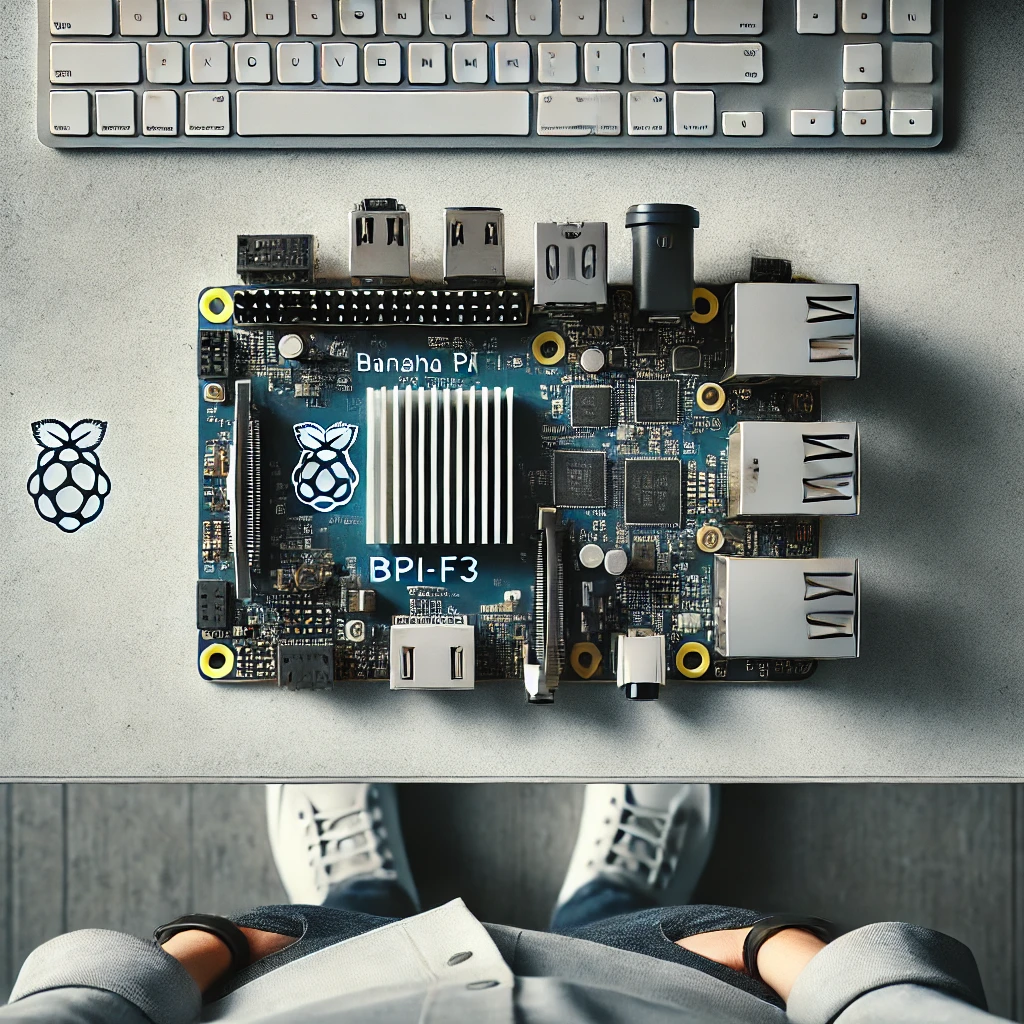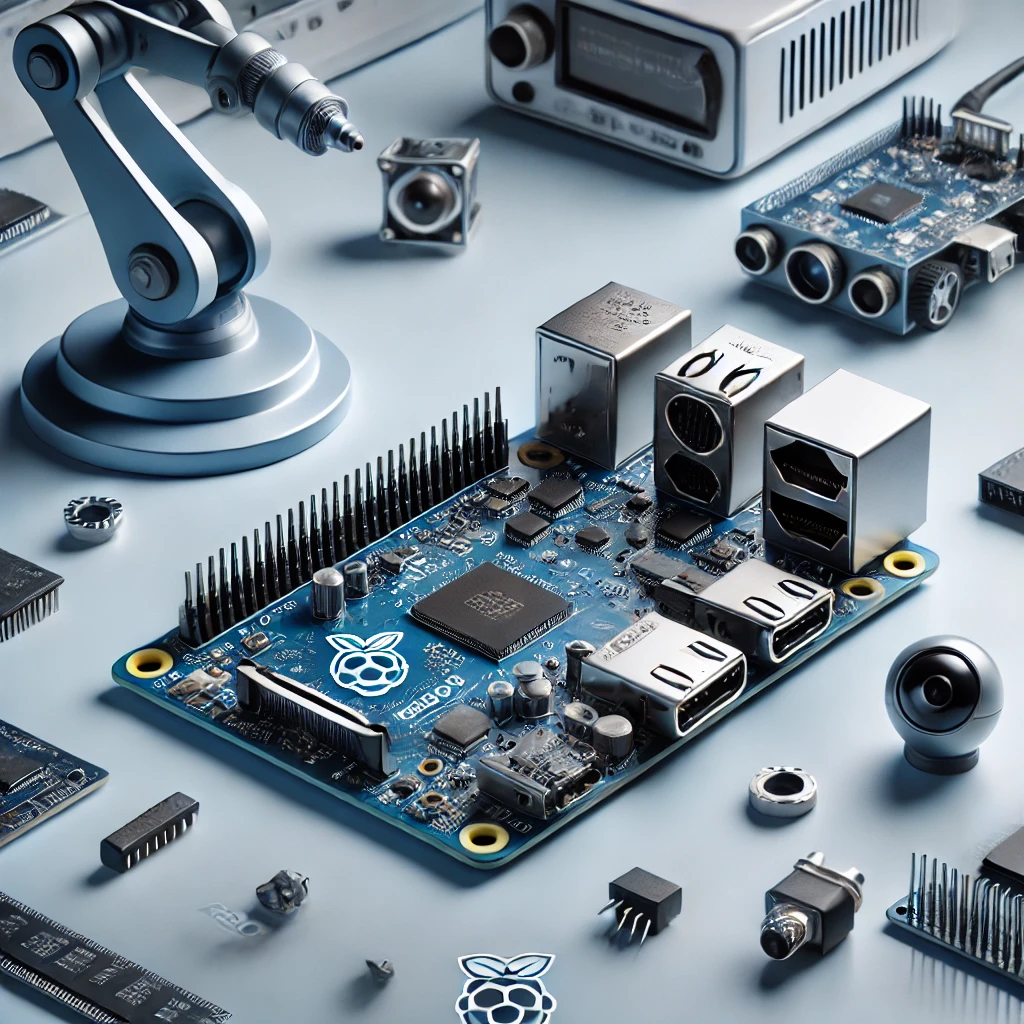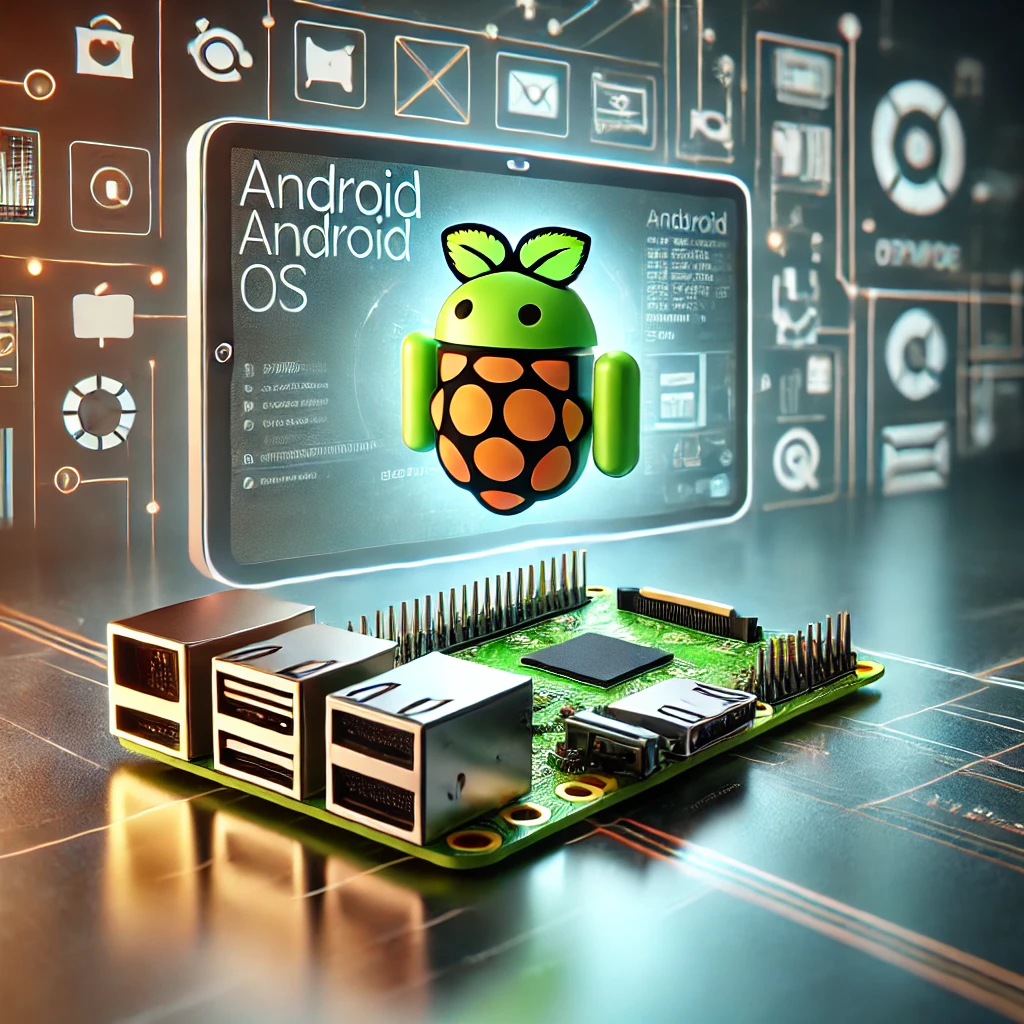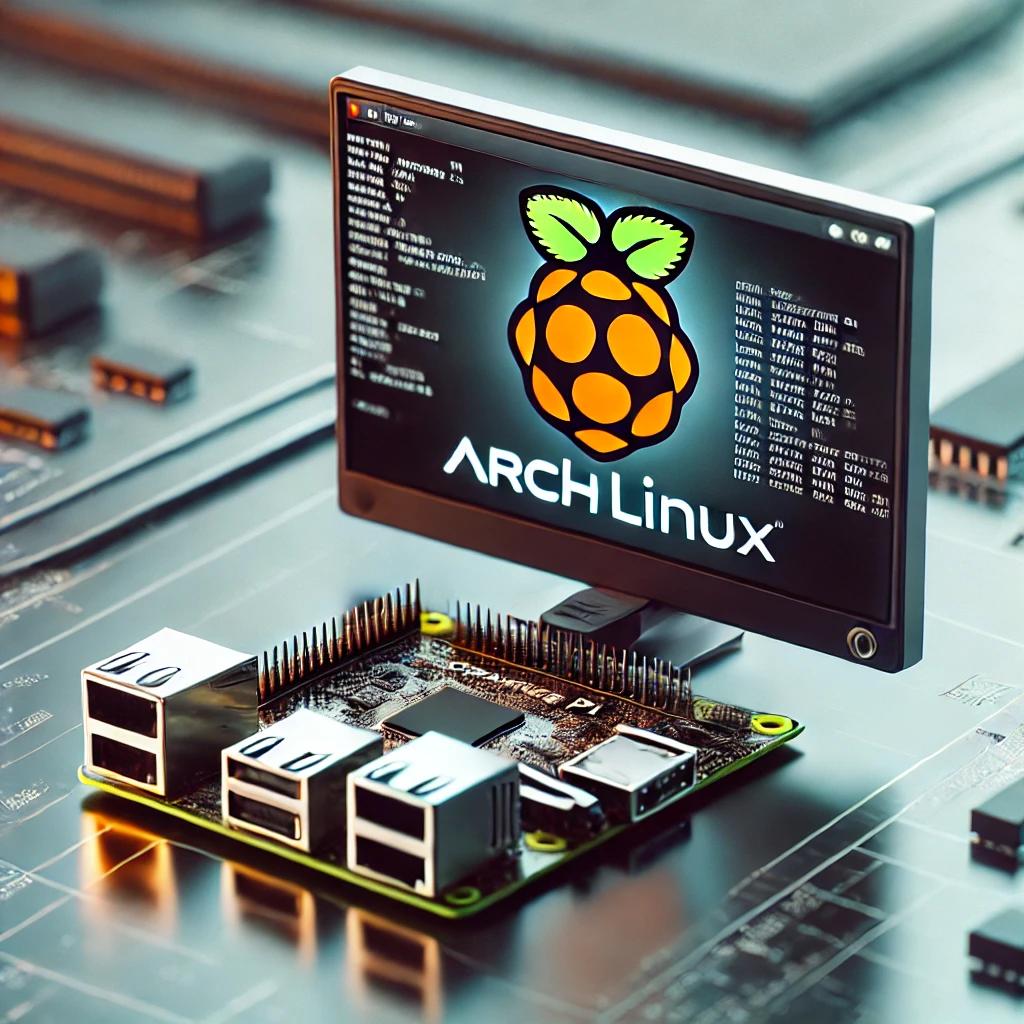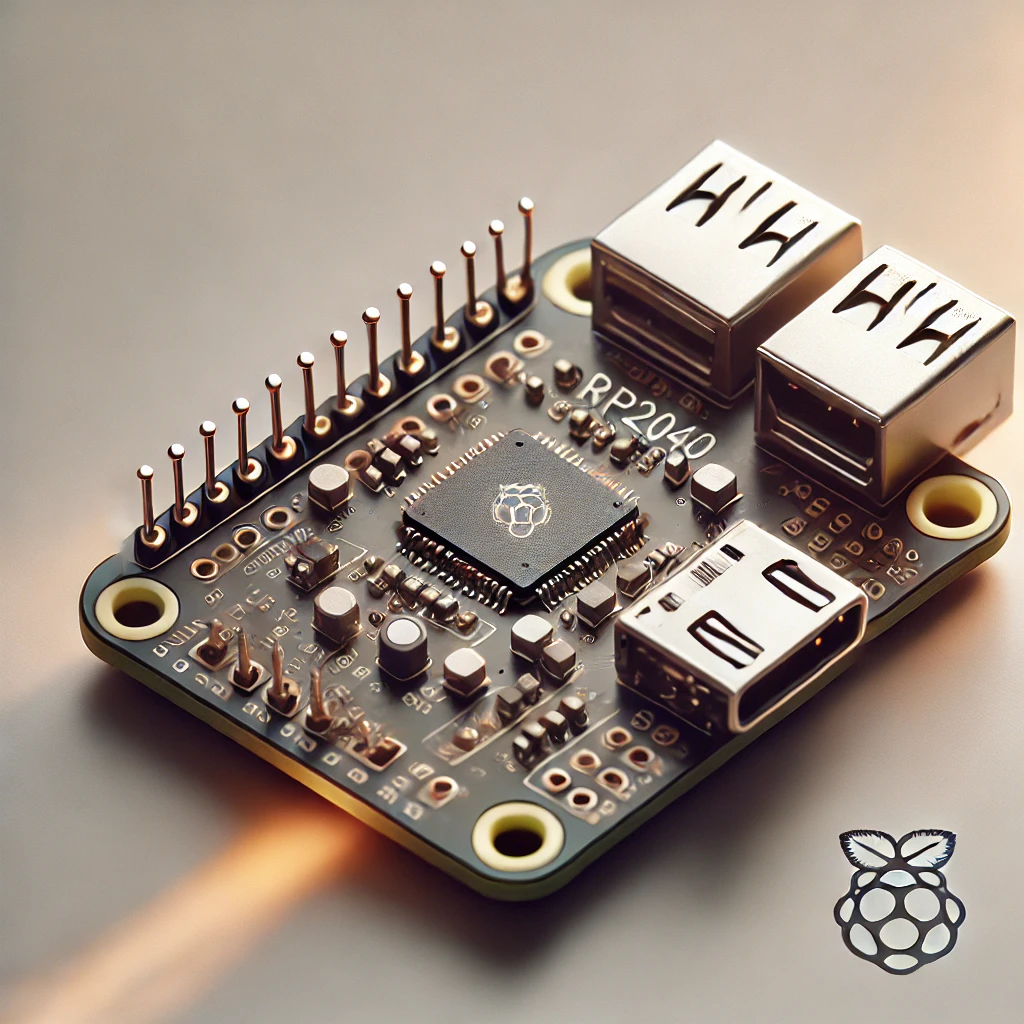The Banana Pi BPI-F3 is an advanced single-board computer (SBC) powered by the SpacemiT K1 RISC-V octa-core processor, designed to handle AI, IoT, and edge computing tasks. Equipped with up to 16GB of RAM, dual Gigabit Ethernet, USB 3.0, PCIe expansion, and AI neural processing capabilities, it is ideal for applications such as smart surveillance, robotics, industrial automation, and more.
Banana Pi BPI-F3
The Banana Pi BPI-F3 is one of the most advanced single-board computers (SBCs) from Banana Pi, catering to industries and developers working on AI-driven, IoT, and edge computing solutions. At its core, the BPI-F3 uses the powerful SpacemiT K1 RISC-V octa-core processor with built-in AI capabilities. The SBC’s efficient processing, high memory capacity, and extensive connectivity options make it an ideal platform for high-performance applications requiring real-time processing and AI acceleration.
In this article, we will provide a detailed look at the BPI-F3’s features, its technical specifications, and the types of use cases where it excels, such as in robotics, AI applications, and smart city infrastructure.
1. Key Specifications and Features of the BPI-F3
A. SpacemiT K1 RISC-V Processor: AI-Optimized Computing
The BPI-F3 is powered by the SpacemiT K1 RISC-V processor, an octa-core chip optimized for high-performance computing and AI acceleration. The RISC-V architecture, being open-source, offers customization options and flexibility in designing embedded systems and applications.
- RISC-V Architecture: The BPI-F3’s processor is based on the open-source RISC-V architecture, known for its efficiency and adaptability in a wide range of embedded systems. Unlike proprietary architectures, RISC-V allows for more freedom in optimization and configuration.
- 2.0 TOPS AI Neural Processing Unit (NPU): The processor includes an integrated 2.0 TOPS NPU, enabling fast AI inference tasks such as object detection, facial recognition, and speech processing. This makes the board particularly suited for real-time AI applications at the edge.
B. Memory and Storage
The BPI-F3 offers multiple configurations in terms of RAM and storage to meet different project needs.
- DDR4 RAM: The board comes with 2GB to 16GB of DDR4 RAM, making it suitable for tasks that require large memory capacities, such as AI model training, real-time analytics, and IoT operations that need to handle multiple inputs.
- Onboard Storage: The SBC provides eMMC storage options ranging from 8GB to 128GB and supports MicroSD cards for additional storage expansion. This ensures the flexibility needed for applications with higher data storage demands, such as surveillance systems or IoT data hubs.
C. Connectivity Options
The BPI-F3 is highly connected, offering several interfaces for network, peripheral, and device integration:
- Dual Gigabit Ethernet Ports: The board is equipped with dual Gigabit Ethernet ports, ideal for network-intensive applications such as edge computing, IoT gateways, or NAS setups where high-speed, reliable network connections are crucial.
- PCIe Expansion Slot: The PCIe slot offers support for M.2 SSDs, high-speed data storage, 5G modems, or even additional AI accelerators. This opens up possibilities for advanced computing setups such as real-time analytics servers, high-speed media processing, or data-intensive applications.
- USB 3.0 Ports: The BPI-F3 includes four USB 3.0 ports, which support fast data transfer and peripheral connections, allowing users to connect devices like cameras, external drives, and other IoT sensors.
D. Camera and Display Support
The BPI-F3 supports MIPI-CSI camera interfaces, making it ideal for image and video processing tasks. It also supports MIPI-DSI for high-definition displays, making it an excellent choice for interactive projects such as smart kiosks, AI-powered digital signage, or smart mirrors.
- High-Resolution Camera Support: The BPI-F3 can connect to high-resolution cameras for computer vision projects. This feature makes it ideal for surveillance systems, AI-powered cameras, or robotics projects requiring image analysis.
E. PoE and Cellular Connectivity
The BPI-F3 supports Power over Ethernet (PoE), allowing it to be powered via Ethernet cable. This simplifies installation in remote locations where power may be limited. The board also supports 4G LTE modules via the mini PCIe slot, enabling cellular communication for IoT devices deployed in remote or mobile environments.
- PoE: By supporting Power over Ethernet, the BPI-F3 simplifies installations for outdoor IoT systems, smart cities, and industrial automation by eliminating the need for separate power cables.
- 4G LTE Support: The board’s mini PCIe slot allows for 4G LTE module integration, enabling it to handle data communication over cellular networks. This makes it ideal for off-grid IoT solutions or mobile systems such as drone communication hubs.
2. Applications and Use Cases for the BPI-F3
The BPI-F3’s rich feature set and AI capabilities make it suitable for a wide variety of use cases, particularly in industries requiring real-time data processing, AI-based automation, and IoT infrastructure.
A. Smart Surveillance and AI-Driven Security Systems
The BPI-F3’s AI capabilities and camera support make it perfect for AI-powered surveillance systems. Using the board’s NPU, developers can build systems capable of processing high-definition video feeds in real-time, identifying objects, faces, and motion, and sending security alerts based on predefined conditions.
Example Project:
Create a smart surveillance system using the BPI-F3, capable of monitoring multiple cameras, identifying suspicious activity, and generating real-time alerts. The system could also leverage AI for facial recognition and motion detection to enhance security measures.
B. Edge Computing and Industrial IoT Gateways
With its dual Ethernet ports and PCIe expansion, the BPI-F3 is well-suited for industrial IoT and edge computing. It can act as an IoT gateway, collecting data from multiple sensors and processing it locally, minimizing latency and reducing the need for constant communication with cloud-based servers.
Example Project:
Develop an IoT gateway that connects industrial machines, monitors their performance in real-time, and controls production processes autonomously. The board can also trigger predictive maintenance tasks based on sensor data, helping reduce downtime.
C. Robotics and Autonomous Systems
The BPI-F3 is also an excellent platform for autonomous robotics and AI-driven systems. With its processing power and AI capabilities, the board can handle data from multiple sensors and cameras, allowing robots to navigate, make decisions, and interact with their environments intelligently.
Example Project:
Build an autonomous robot that uses the BPI-F3 to process sensor data and make decisions in real-time. The robot could be equipped with cameras, lidar, and other sensors to perform tasks such as obstacle avoidance, object recognition, or autonomous navigation.
D. Smart City Solutions and Environmental Monitoring
The BPI-F3 can be used to build smart city infrastructure, where it can manage tasks such as traffic monitoring, air quality analysis, and energy consumption tracking. Its AI capabilities allow for real-time analysis of environmental data, making it an ideal platform for smart city IoT projects.
Example Project:
Deploy a smart city traffic management system that uses the BPI-F3 to monitor traffic conditions, analyze congestion patterns, and adjust traffic lights in real-time. The system can help optimize traffic flow and reduce pollution.
The Banana Pi BPI-F3 is a highly versatile and powerful single-board computer, ideal for developers and engineers working on AI, IoT, and edge computing projects. Its combination of high-performance RISC-V processing, AI neural acceleration, and extensive connectivity options makes it a perfect solution for real-time data processing, smart surveillance, industrial automation, and robotics.
Whether you are building AI-powered security systems, developing autonomous robots, or designing IoT networks, the BPI-F3 provides a reliable, scalable, and efficient platform to support your innovative projects.

